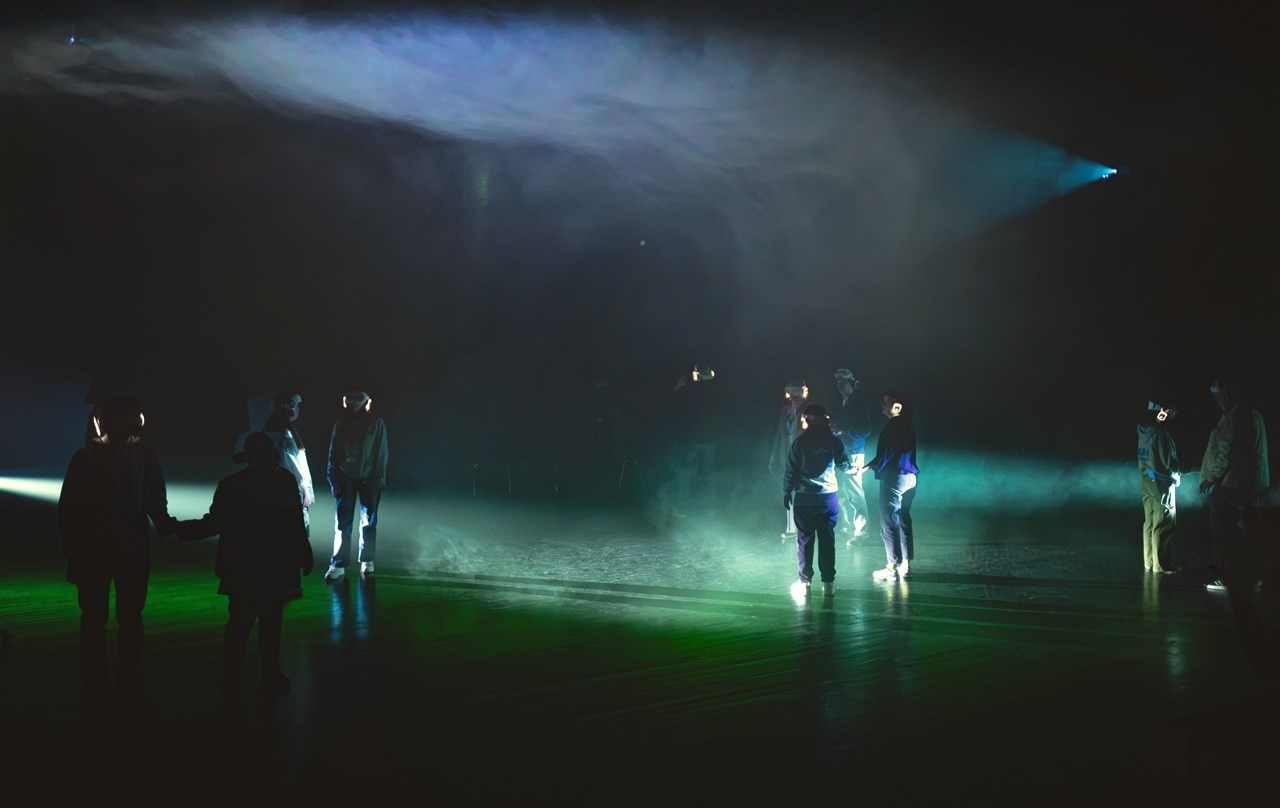The sculpture hall at Liljevalchs breathes, carries, and connects scent, sound, light, and vibrations as organs in a circulatory system for emotions, memory, and matter. Hyper-directional speakers are used to create extreme closeness — where the sound does not spread in the room, but travels as a narrow beam and arises in resonance with the visitor’s body, in the encounter. In the Living Archive , the art hall breathes at the light pace of the tide. A mist rises and dissolves. Choir singing rushes into the room’s memory and atmosphere. When the weather in the archive changes, mist and light projections ripple over the visitors’ silhouettes, like water shaped against skin. Bass vibrations rumble through the floor and walls, while scent particles – memories of rivers – bring geological, chemical, and industrial histories to life.
What if the rivers we have buried, the species we have lost, and the climate we have destabilized are not just external phenomena, but symptoms of displaced parts of our own inner world?
Embodying the river is not something you look at – it is something you go through.
Groups of up to 40 people are given wireless headphones and ‘goggles’ that obscure their vision and turn their gaze inward. Smell and touch are the work’s first language – a language that goes beyond sight and logic, touches memory and opens the body to a different way of knowing. Participants are guided by voices that are set in motion through hand-to-hand interaction.
We pull, drag, and shape each other – sometimes in resistance, sometimes in co-motion – until everything stops. Our bodies create valleys and furrows, reshaping the landscape with new voices. Our hands alternate between care and control. It is frightening to realize how many forms they can take: the farmer’s hand that redirects the flow from the field, the industrialist’s hand that forces movement into straight lines. We are all of these – and none of these – at the same time.
Like water and stone, we shape our surroundings – and are shaped ourselves. Landmasses rise beneath our feet, mountains erode to plains – we are geology in motion. The permanence of the landscape is an illusion, created by short lifespans. We hear the rise and fall of civilizations as sudden pulses of sound. Some hands tame and confine us. Others free us. Possessed by the stone within, I move – carried by forces that are not entirely my own.
A mutual trust, a balance between differences, softens the will to control and allows the river to express itself freely through the quiet choreography of the bodies. Matter, energy and movements reflect the elements: how earth stops, how water gives way, how bones remember resistance. Gradually, the group begins to move not as individuals, but as a common body. The process is not about becoming something else, but about remembering what already exists: that we are water and stone, and can be reshaped into a river. We are not in nature – nature is in us.
River Biographies is developed as a co-production between Liljevalchs and the West Bund Museum in collaboration with Chronus Art Centre, Shanghai and the Swedish National Theatre. Research partner: Southbank Centre, London. The project has been carried out with financial support from IASPIS – the Swedish Arts Council’s international programme for visual and formal arts and the Swedish Arts Council.




